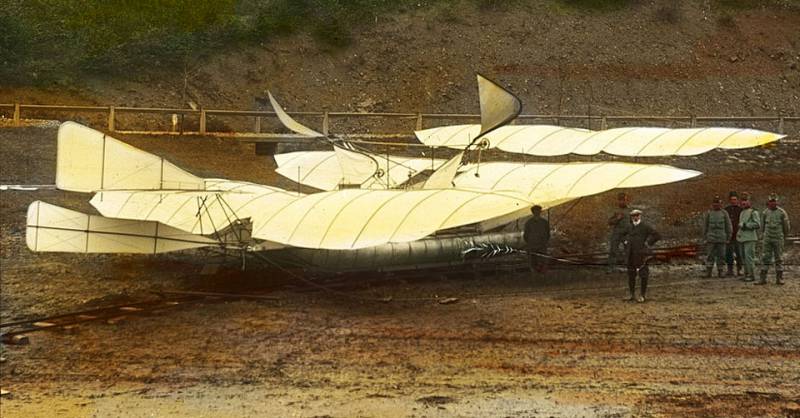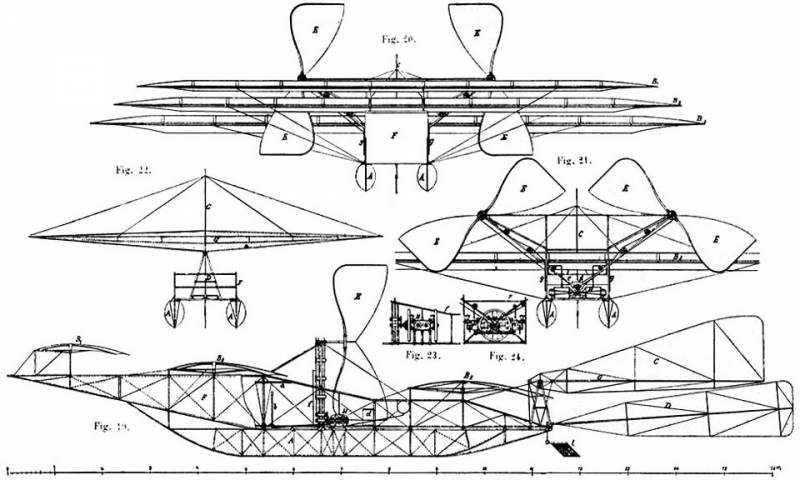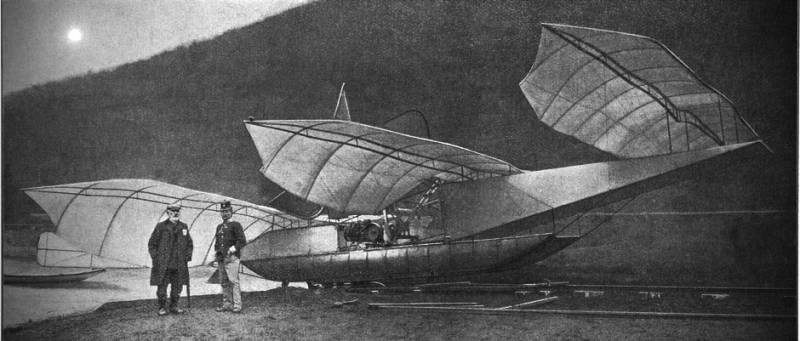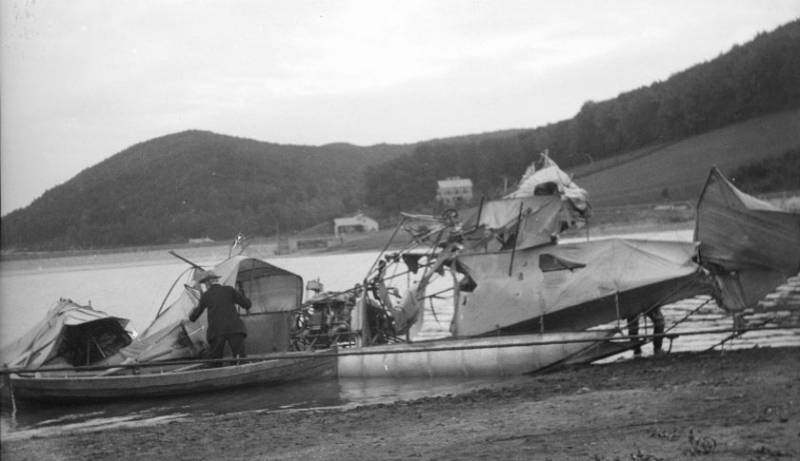Three-winged nelyun
Exactly 115 years ago, October 3 1901, an unsuccessful test of an aircraft created by one of the predecessors of the Wright brothers - 65-year-old Austrian engineer Wilhelm Kress took place. Kress's airplane, which he called the “Drahenfliger” - “Flying Dragon”, had three wings mounted one after another, and rested on two long aluminum floats to take off from the water. Thus, it can be considered the world's first hydroplane.
Kress made his apparatus "waterfowl", as he believed that in the event of an accident, falling into "soft" water is less dangerous than hitting the ground. One of the wings could change the angle of attack, playing the role of elevator. The aircraft set in motion the Daimler engine, which rotated two large propellers by means of belt transmissions. The inventor ordered a gasoline engine from Daimler-Motoron-Gesellschaft, which was supposed to weigh no more than two quintals and develop 30 horsepower. However, the firm did not cope with the task. The resulting motor of the required power weighed not 200, but whole 380 kg.
The heavy "engine" required more massive mounts, as a result, the total weight of the airplane exceeded the design weight by 250 kg. The “Drahenfliger”, which was supposed to weigh 600 kilograms, became heavier to 850, and with gasoline, oil, water for cooling the engine and the pilot - almost to a ton. Thus, one horsepower accounted for more than 30 kg of take-off weight. This made the possibility of flight very elusive, but Kress, nevertheless, decided to try. Despite his considerable age, he personally took a seat in the cockpit, started the engine and began to run on the water surface of the Vienna Lake Neusiedlersee.
The airplane crossed the water area from end to end, but was never able to tear itself away from the water. Then Kress laid a turn to try to fly in the opposite direction, but the "Dragon" tilted, striking his wings and one of the propellers through the water. The planes and the screw instantly shattered into smithereens, and their fragments ripped up the linen skin of the fuselage and destroyed the second propeller. Calculation on the "softness" of water was wrong. However, the floats survived and the plane did not sink. He was taken in tow and the boat dragged to the shore. The inventor himself was almost not injured, escaping with only a "cold shower" and small bruises.
Perhaps Kress was even lucky that the airplane never took off, since the Drachenfiger aerodynamic scheme, with its lack of roll control, made it absolutely unstable in flight. Having risen into the air, such an airplane would inevitably tip over and collapse, and the consequences of a fall could have been very deplorable. Later, Kress began the construction of a new apparatus, but the lack of funds prevented it from being completed. And in his old age he could only watch the flights of his more successful followers. He died in the year 1913.
On the screen saver - colored photo of Kress airplane before the start of the test. As can be seen, a temporary rail track was laid for its launching.
Drawing seaplane Kress. It is not clear why the author equipped it with two such large rudders, placing them one above the other.
Wilhelm Kress, an unknown Austrian officer and the "Dragon" on the shores of Neusiedl.
The consequences of the attempt to take off the "Flying Dragon", which, to the chagrin of its creator, turned out to be flightless.




Information